Patellofemoral syndrome (PFS) is one of the most common knee pains experienced by both the athletes and the elderly.
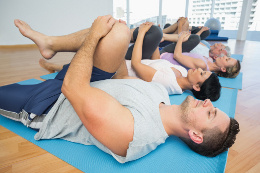
Patellofemoral pain syndrome, or patellofemoral compression syndrome, is a condition, wherein the person experiences pain around the kneecap. This pain usually occurs on the sides of the kneecap. Some people may also experience a grinding feeling in the knee or also occasional popping of the knee. The knee pain may increase due to physical activities such as running, jogging, sprinting, jumping, walking up and down the staircase, and squatting. The pain subsides with rest; however, it aggravates with increased activity. There are certain exercises that may be performed to reduce the discomfort and strengthen the quadriceps. The quadriceps muscles play an important role in the movement of the patella bones. These exercises also aim at stretching the hip, hamstring, calf, and iliotibial band.
The exercises are very simple; however, they should be performed regularly. It takes approximately 6 weeks to completely treat the condition.
Exercise # 1
This is an isometric exercise to strengthen the quadriceps.
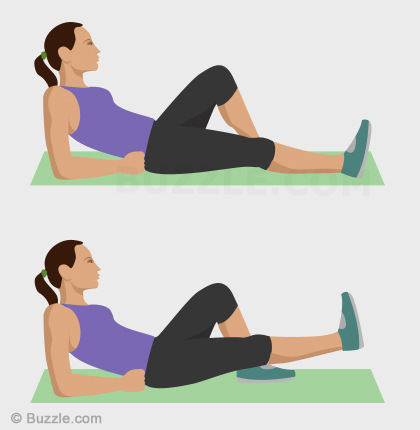
- Lie down on your back.
- Fold your left leg at the knee and keep the right leg straight.
- Slowly lift up your right leg about 6 to 10 inches off the floor and hold in this position for about 10 to 20 seconds.
- Bring the leg to the starting position and repeat the exercise for about 10 times.
- Repeat the exercise on the other leg as well.
Exercise # 2
This exercise stretches the iliotibial band.
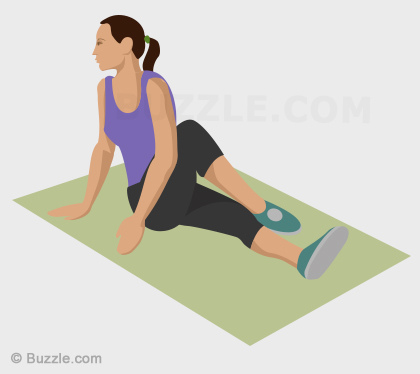
- Sit on the floor.
- Fold your right leg at the knee as you keep your left leg extended in front of you.
- Turn towards the right side and try to push the right leg using your left arm.
- You may feel a stretch in the right buttock and on the outer part of the right thigh.
- Hold for a few seconds and bring the leg back to its starting position.
- Repeat on both the legs 10 times.
Exercise # 3
This exercise is extremely beneficial to alleviate the pain due to patellofemoral syndrome.
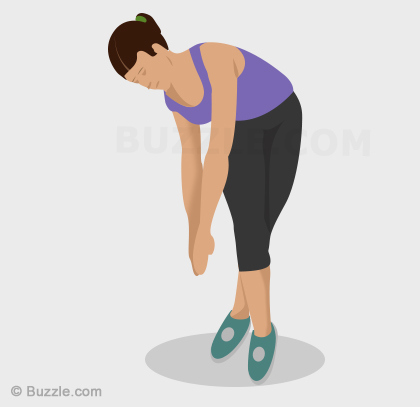
- Stand and cross your right leg, and place it in front of the left leg.
- Keep both your hands together and slowly start bending down towards the floor.
- You may feel a stretch on the outer part of the left thigh as you bend down.
- Hold the stretch for approximately 10 seconds. Come back to the original position and repeat the exercise 10 times.
- Change sides and repeat on the other side as well.
Exercise # 4
This is the hamstring stretch, which is an important exercise for both women as well as men.
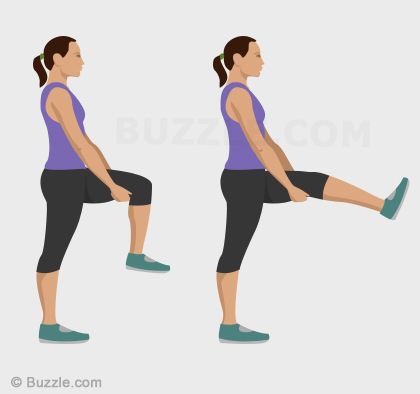
- Stand straight, lift your left leg and try to bring the left knee towards the chest.
- Place your hands such that you grip the left thigh so that you can keep the thigh steady.
- Now slowly straighten your left leg in the air till you feel a stretch in your leg.
- Hold this position for about 5 seconds, and then repeat the exercise 10 times on both the legs.
Exercise # 5
This calf stretch exercise should be performed facing the wall.
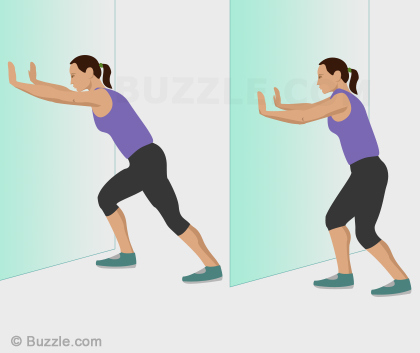
- Stand facing the wall by placing your right leg in front about 12 inches away from the wall with your left leg behind. There should be about 20 inches gap between both the legs.
- Place your hands on the wall.
- Now, slowly try to bring the heel of the left leg towards the floor so that you are able to feel the stretch in the calf of the left leg.
- Hold this position for 10 seconds, release, and repeat the stretch 5 times on both the legs.
Along with the aforementioned exercises, you should take adequate measures to avoid putting undue stress on the knee. If you are into cycling, ensure that the seat is adjusted at an adequate height. It is also recommended that you avoid performing leg presses and squats as they may put unnecessary stress on the knee.
Disclaimer: This article is for informative purposes only. Always consult a physician before starting any exercise in order to reduce the risk of injury.


 Patellofemoral pain syndrome, or patellofemoral compression syndrome, is a condition, wherein the person experiences pain around the kneecap. This pain usually occurs on the sides of the kneecap. Some people may also experience a grinding feeling in the knee or also occasional popping of the knee. The knee pain may increase due to physical activities such as running, jogging, sprinting, jumping, walking up and down the staircase, and squatting. The pain subsides with rest; however, it aggravates with increased activity. There are certain exercises that may be performed to reduce the discomfort and strengthen the quadriceps. The quadriceps muscles play an important role in the movement of the patella bones. These exercises also aim at stretching the hip, hamstring, calf, and iliotibial band.
Patellofemoral pain syndrome, or patellofemoral compression syndrome, is a condition, wherein the person experiences pain around the kneecap. This pain usually occurs on the sides of the kneecap. Some people may also experience a grinding feeling in the knee or also occasional popping of the knee. The knee pain may increase due to physical activities such as running, jogging, sprinting, jumping, walking up and down the staircase, and squatting. The pain subsides with rest; however, it aggravates with increased activity. There are certain exercises that may be performed to reduce the discomfort and strengthen the quadriceps. The quadriceps muscles play an important role in the movement of the patella bones. These exercises also aim at stretching the hip, hamstring, calf, and iliotibial band.



